The Fundamentals of Blackened Tilapia
I am a big fan of blackened tilapia. I would wager to say that it's one of the easier fish to cook. Tilapia are so small compared to something like salmon or even whole cod, that there isn't a lot of guess work in cooking them. There isn't the checking in five minutes, checking the change in color, and guessing whether the inside is cooked while the outer edges are burning?? Pretty much any time on the stove will cook tilapia through. It's also one of those dishes that looks more impressive than it is! And I'm incredibly fond of making it.
Tilapia a great starter fish to make because it is so simple. It also takes on spices and flavors so well that you don't have to worry about that that fishy taste. It's a very mild fish to begin with, cooks in virtually no time at all, and is a great quick and easy dish to toss together.
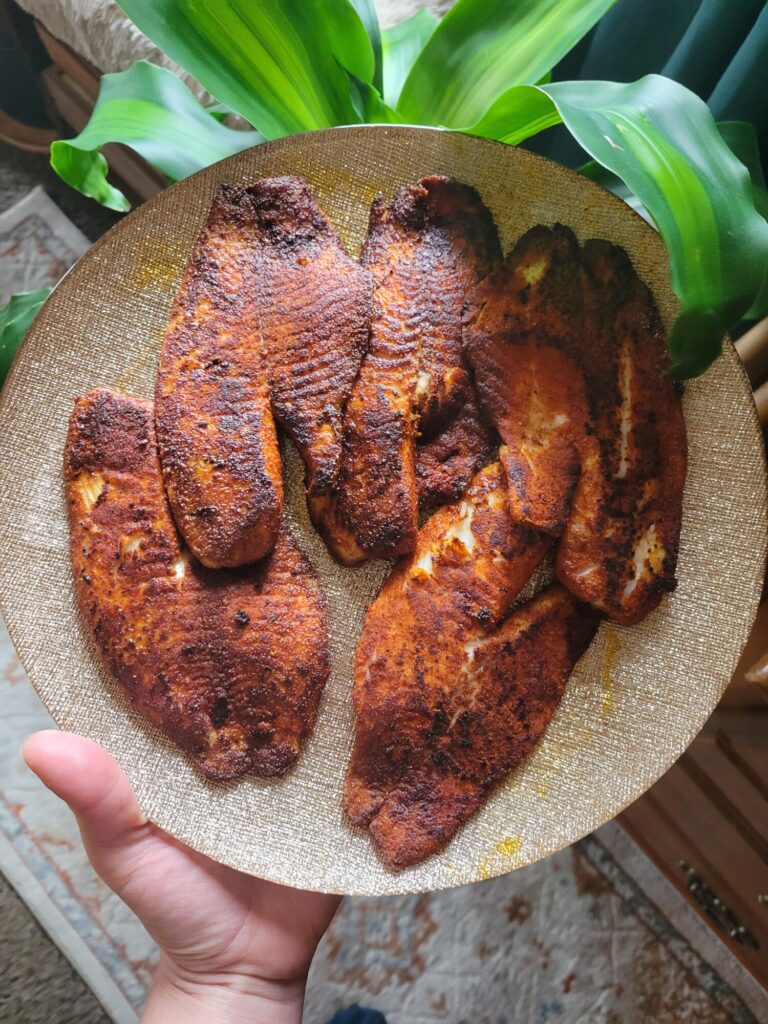
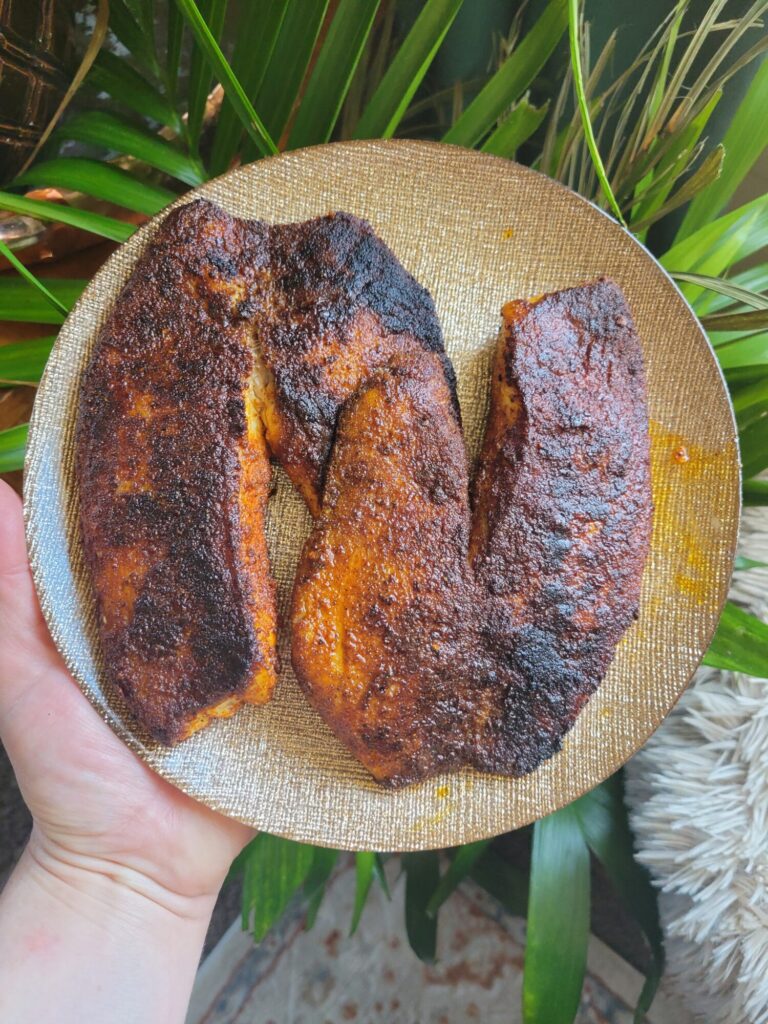
How Much Tilapia Do You Need?
I tend to make this recipe in two different sizes. I usually either make 2 or 5 at a time. This is an easy thing to size up or down depending on how much fish you have on hand, though. All you really need is a comparable amount of spices. I've even run out and then just mixed a little bit of extra spices to sprinkle on.
It really is one of those recipes where measurements aren't really that key. You're just tossing spices together and dipping fish in it.
It's almost easier to make blackened tilapia in larger quantities because there's less guess work in how much spices you need. The size of each individual fish will vary. But the average of 5 fillets is usually more predictable!
Although you can always make larger quantities of spice mix and just use what you need as you need it. As long as the spices don't touch the fish or are exposed to moisture or other elements, they will last virtually indefinitely. If you're really worried about it, spices do typically have an "expiration date." Although it's really more of an indicator that spices eventually lose some color, flavor, and potency. Spices do not "go bad" in the traditional sense of being inedible.

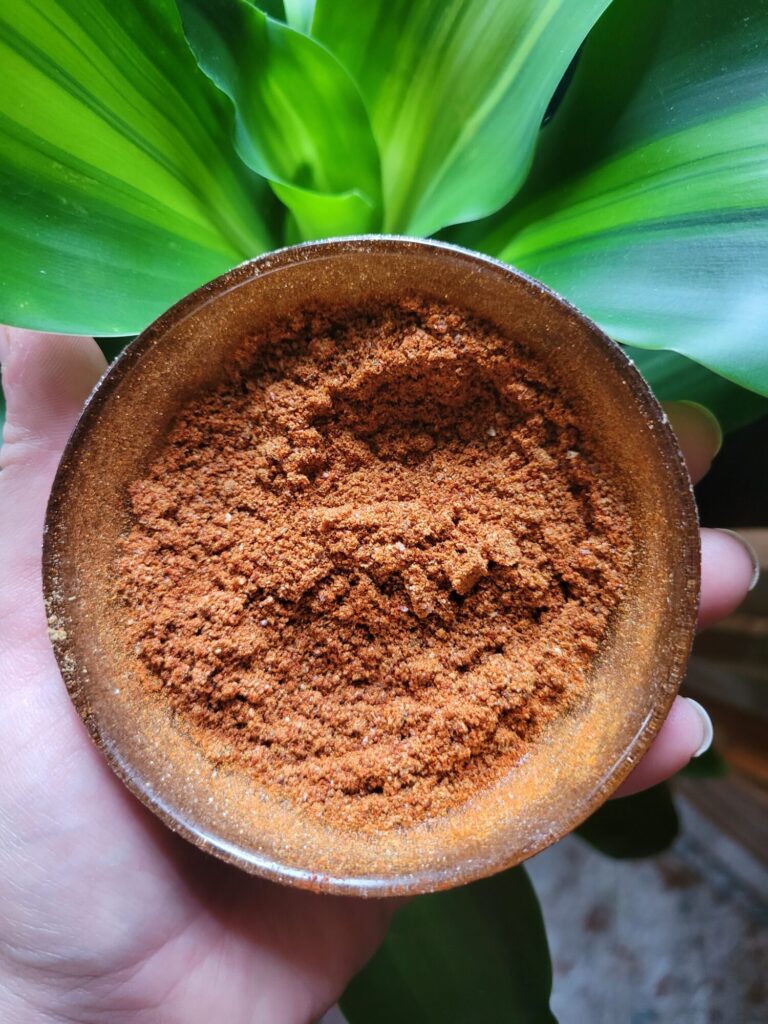
What Seasonings Do You Use for Blackened Tilapia?
I prefer cayenne pepper, coriander, cumin, and smoked paprika. These are kind of my staple spice mix, though. You can just as easily mix and match your own spice mixes, though. In the winter, I tend to add more cinnamon and nutmeg for a warmer flavor profile. You can also add things like ground ginger, mustard, and turmeric.
Just beware, you are adding an enormous amount of spices! Many of these, if not all of these, have a lot of color in them. A lot of these spices are used to naturally dye fabrics. So, you can imagine what would happen if you get this on your clothes, countertops, carpets, and small children! It's not nearly as dangerous as when making things like curry, which absolutely fluoresce. But it is something to note when doing anything with brightly colored foods.
You can also use whole spices and grind them. You will get a much stronger flavor profile with this. I am a fan of big, bright flavors. I find a lot of recipes to be boring and flavorless. I'm assuming in order to appeal to a wider audience. After all, you can always add more spices. But adding less is obviously less of an option!

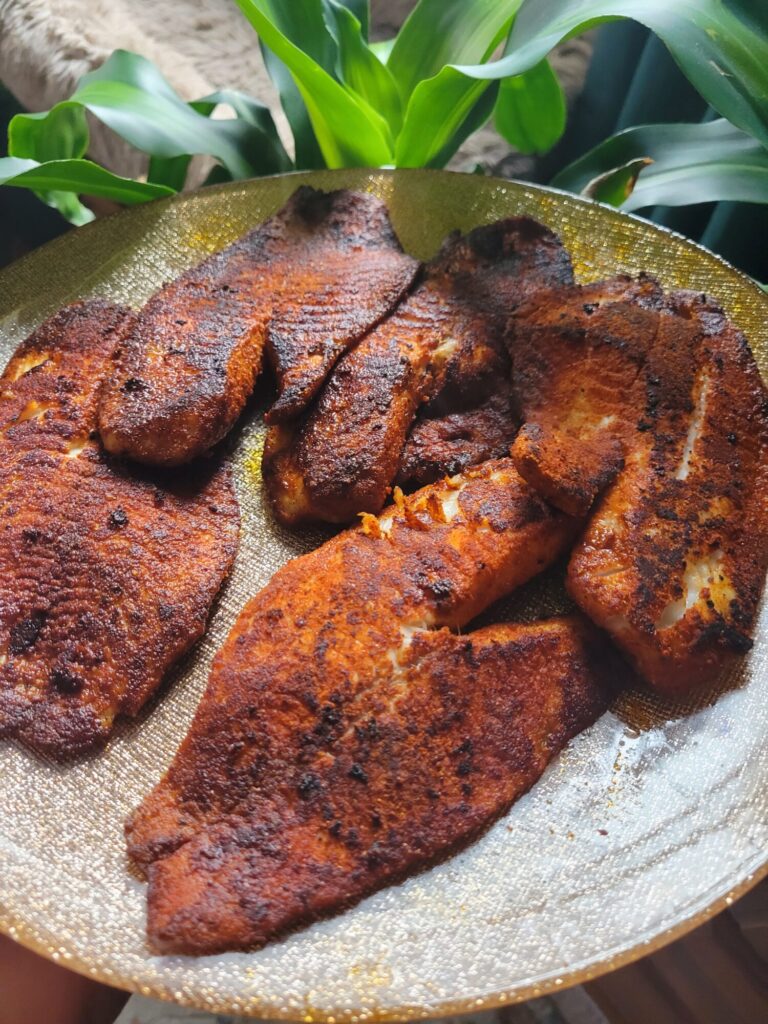
How Do You Cook Tilapia?
I like to refer to it as a "starter" fish. You might not be able to see the tilapia under all of the seasonings. However, this isn't really necessary! Tilapia cooks on the stove in about 2-3 minutes per side. You can temp it. Fish should be cooked to an internal temperature of 145 degrees Fahrenheit. However, tilapia is an incredibly thin fish. By the time the spices begin to blacken, the fish is almost surely cooked. This takes a lot of the guesswork out of the cooking process and. is truly one of the easier fish to make.
People like to talk about salmon and other fish "flaking" when it's done or turning a specific color. This is something that you can absolutely cook by sight and I do quite frequently when baking or barbecuing salmon. However, until you've cooked salmon enough to know what exactly it is that you're looking for here? This sounds like a magical, mystical language that doesn't necessarily make as much sense in practice!
Tilapia is much simpler to make than this. If you've cooked, but not burned the spices? Then, you're on track! And all of us know what "burned" looks, smells, and tastes like. I'm sure that you're imaging all of these senses right now. Just don't do that! And you should be fine.
Undercooked or even raw tilapia is usually safe to eat as well. It's heralded as one of the safer fish varieties, is often used in sushi, and is recommended as one of the fish that pregnant women don't have to worry about consuming. As with any seafood, there are different grades of fish and whether it's something that you're personally comfortable with is always to be taken into consideration. But tilapia is generally considered one of the safer fish to consume.
Gallery
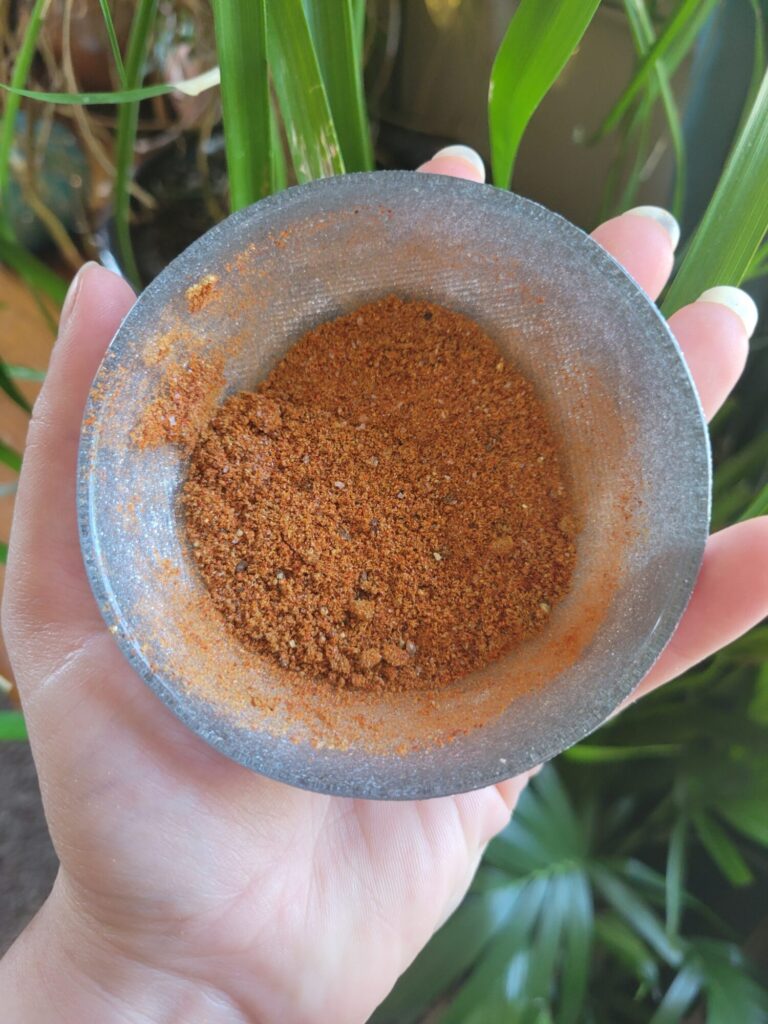
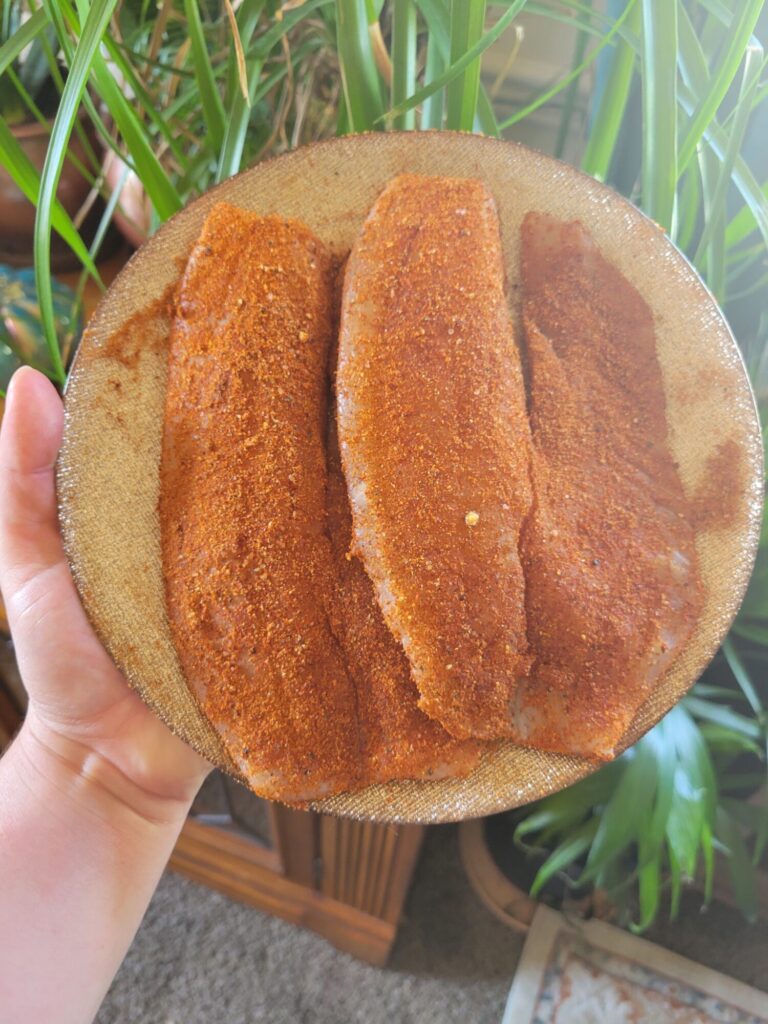

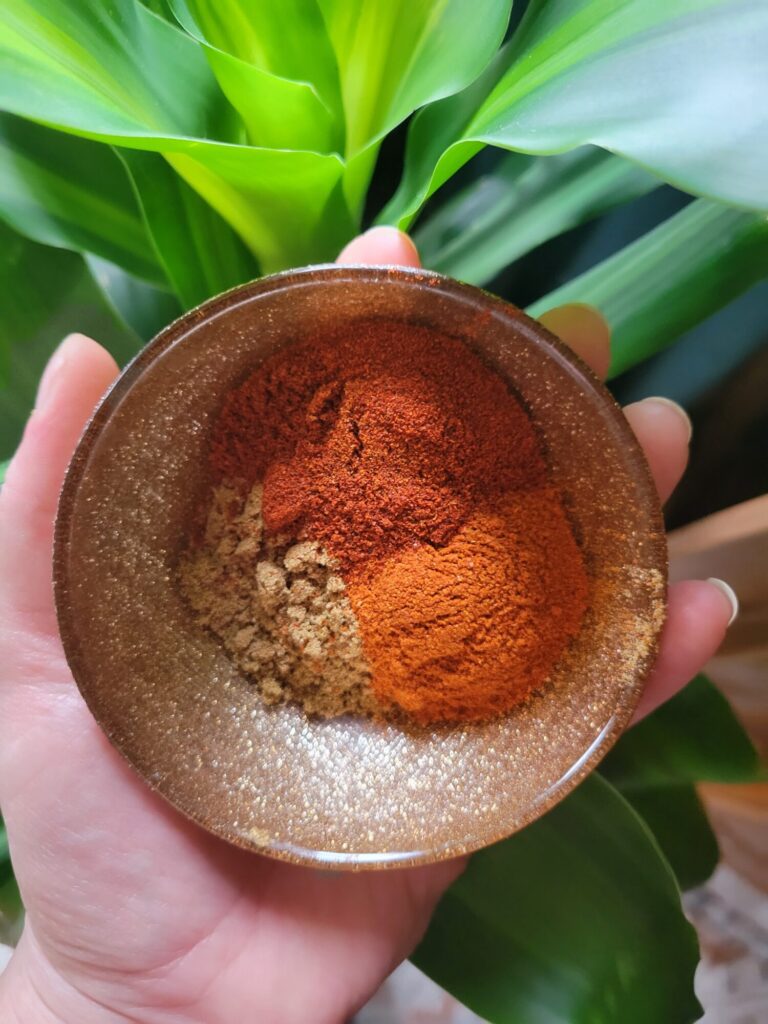




What to Make w/ Blackened Tilapia
I don't tend to eat much meat. But I do make a plethora of seafood recipes and blackened tilapia is one of my favorites! Every time that it's on sale and looks good in the grocery store, I'm probably going to come home with tilapia. It goes great with any number of salads as well as breakfast and dinner options.

The Fundamentals of Blackened Tilapia
Equipment
- Skillet
- Stove
Ingredients
- 5 filets tilapia
- 1 tbsp. cayenne pepper
- 1 tbsp. coriander
- 1 tbsp. cumin
- 1 tbsp. smoked paprika
- dash salt
- dash pepper
Instructions
- Let the tilapia rest until it reaches room temperature.I usually let it sit while the skillet preheats. However, for particularly large fillet's, you may need to remove the tilapia from the fridge a little while before you preheat the skillet. Exactly how long varies widely based on room temperature. Although 15-30 minutes is usually sufficient.
- Preheat skillet on medium heat.I use a cast iron pan, but the same basic principle applies in any skillet. If you aren't using cast iron, just make sure to lightly oil the pan to prevent sticking.
- Mix the spices together in a small dish or bowl.
- Sprinkle spice mix evenly over the tilapia. You can also lay them out across a plate and roll the tilapia in it. The goal is simply to evenly coat the fish with a thin layer of spices. As long as the flesh doesn't directly touch the skillet, you have enough seasoning.
- Add tilapia, one or two fillets at a time, to the skillet and cook for 2-3 minutes, or until the spices have begun to blacken and the tilapia begins to firm.
- Flip the tilapia and cook another 2-3 minutes, or until the spices have begun to blacken and the tilapia flakes with a fork.If you have any question about whether your tilapia is cooked, official recommendations are to cook until an internal temperature of 145 degrees Fahrenheit. At this point the tilapia, much like a salmon, will begin to fall apart at the fat junctions and "flake" off of a fork. When you've done it enough times, you start to notice this particular type of firmness when the pieces ever-so-slightly begin to separate.
Tips, Tricks, & Notes
- I roughly double and halve this recipe with regularity. For 2 filets, use 1 teaspoon per spice. For 5 filets, use 1 tablespoon per spice (1 tsp. cayenne pepper for 2 tilapia, 1 tbsp. cayenne pepper for 5 tilapia).

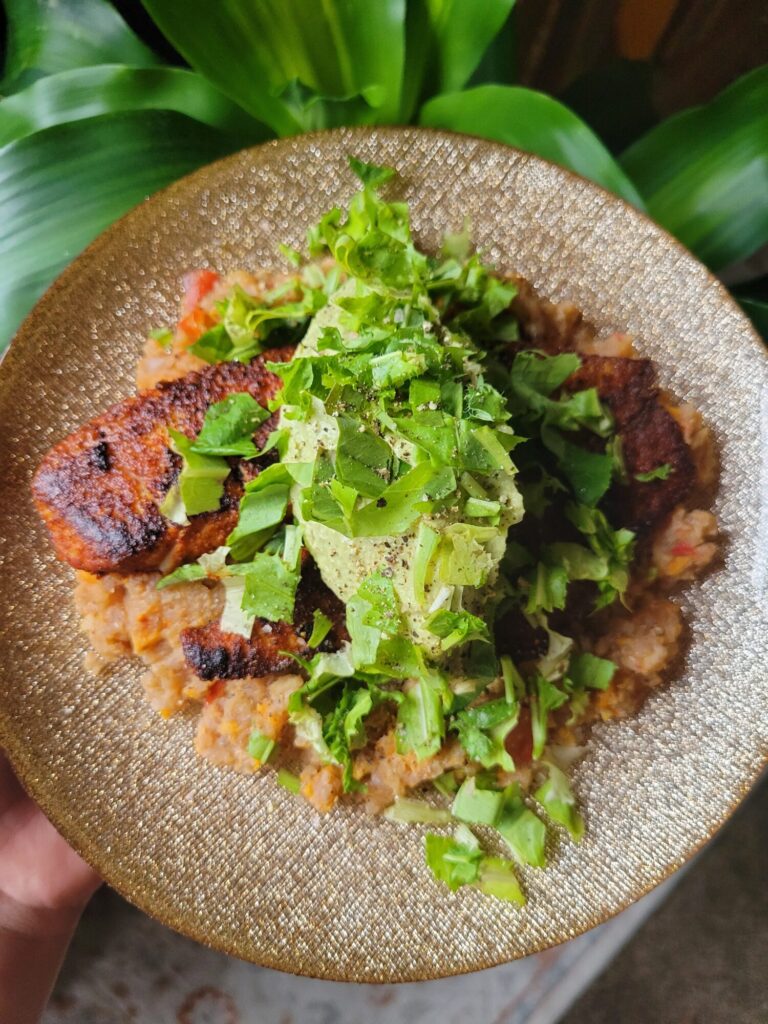

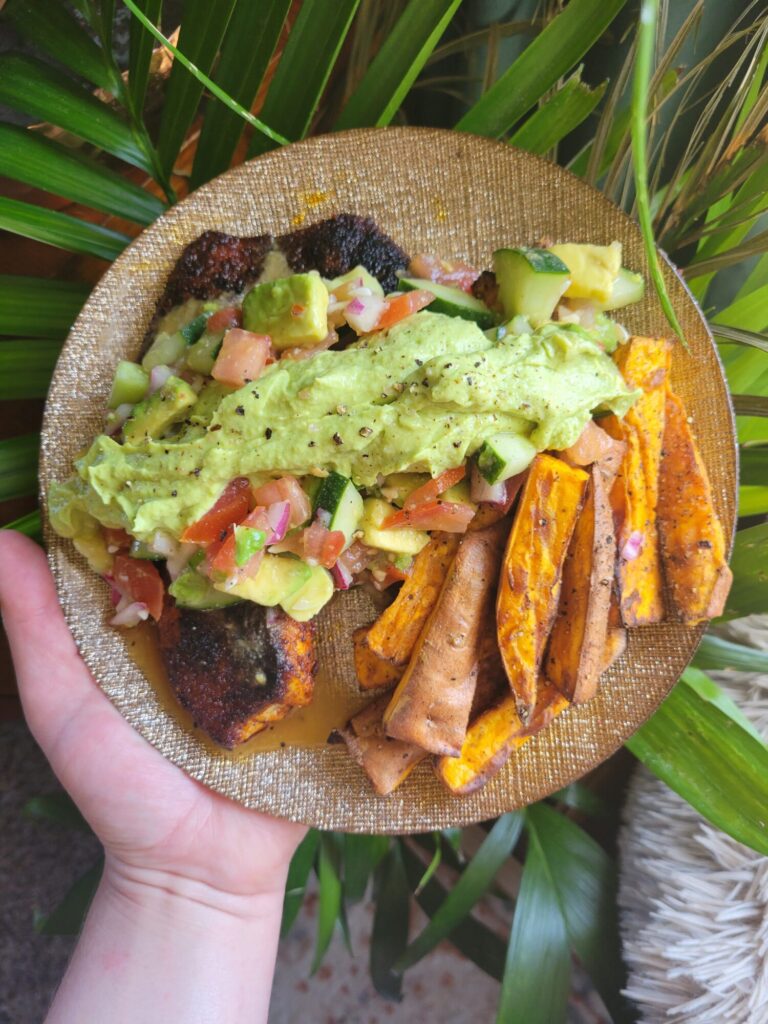

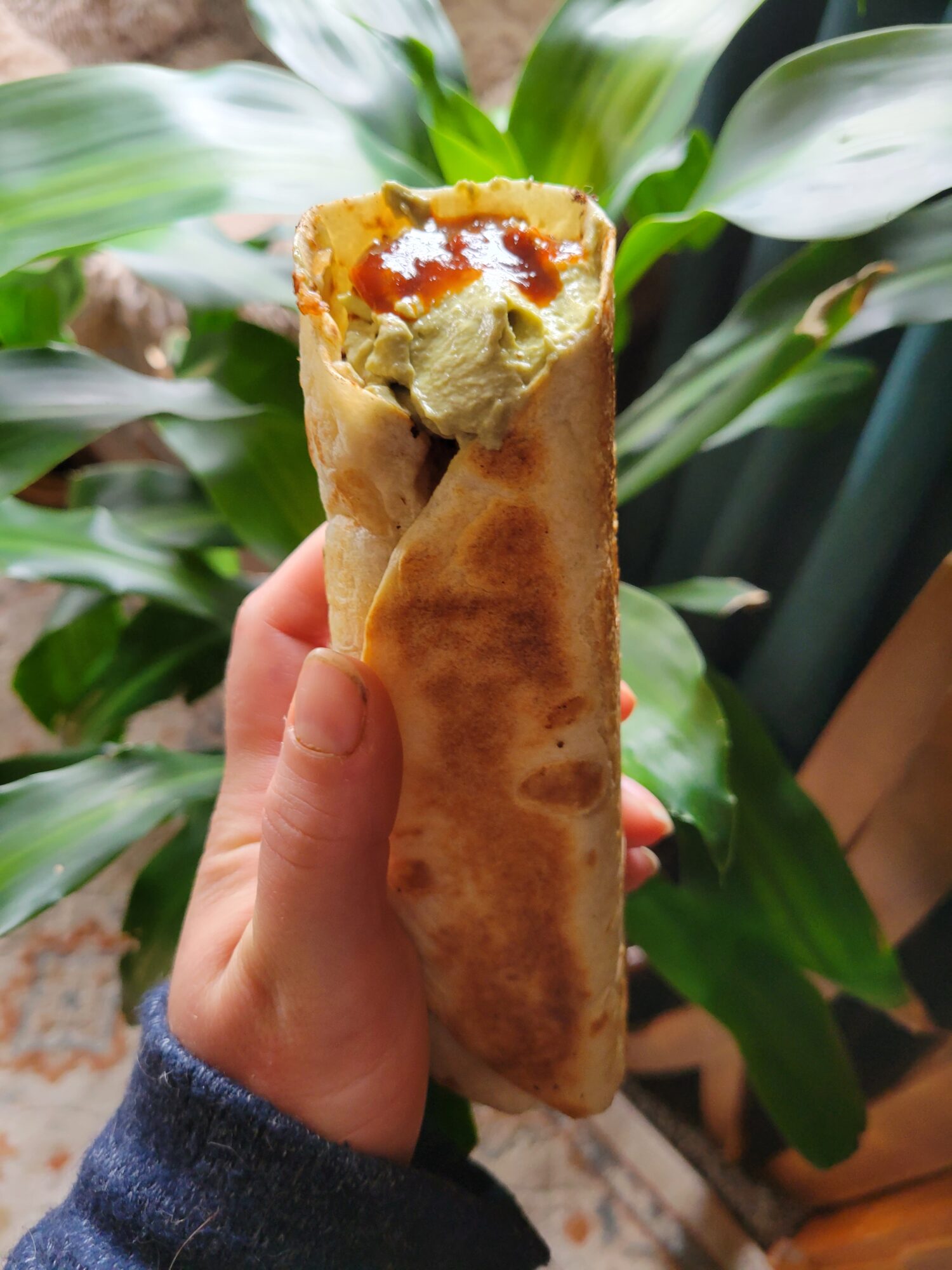






Leave a Reply